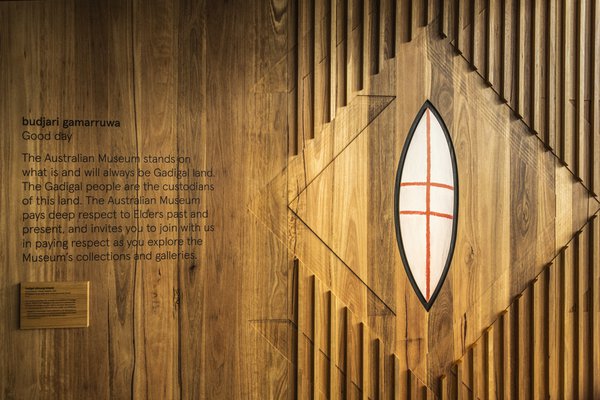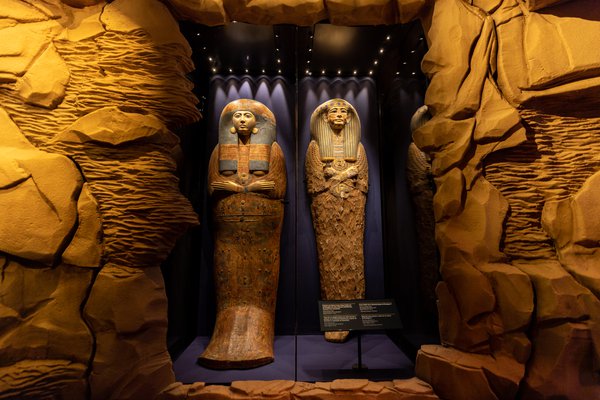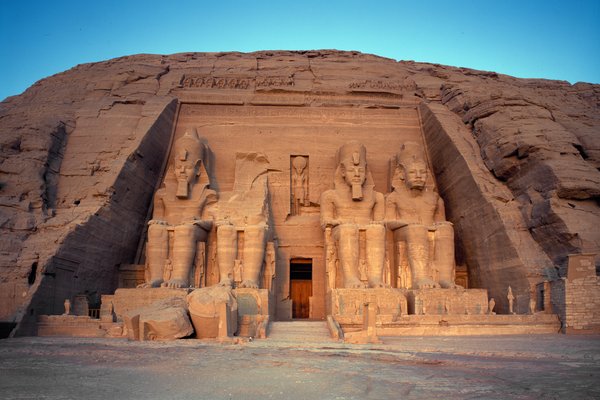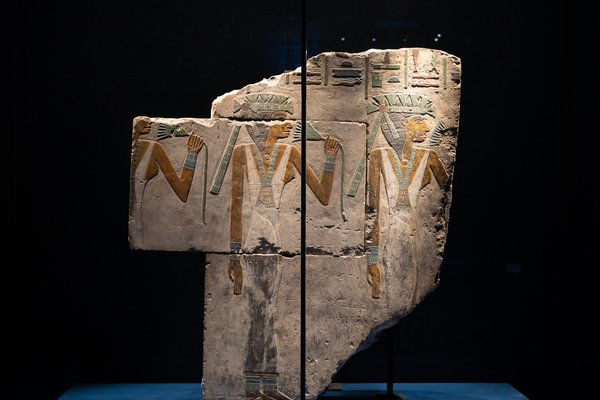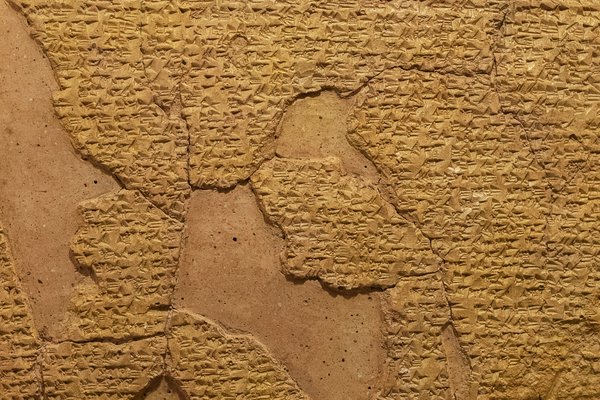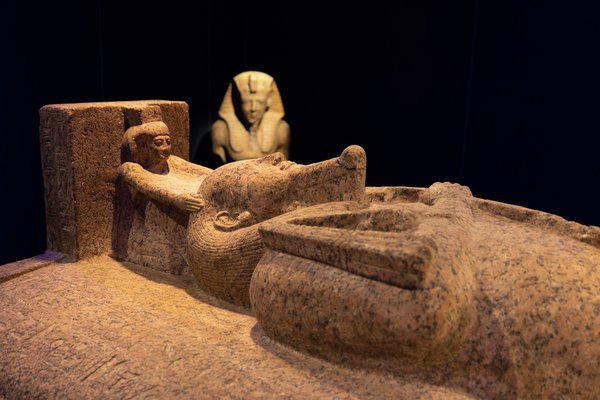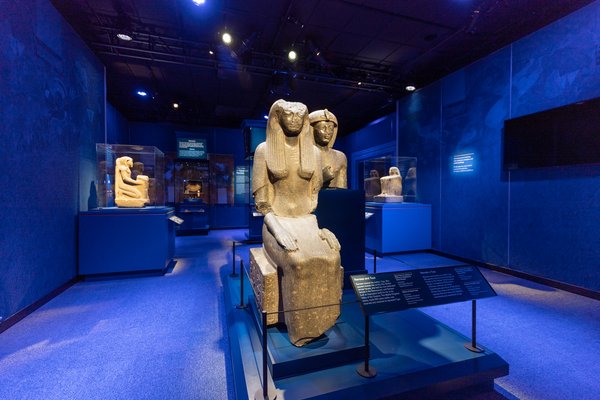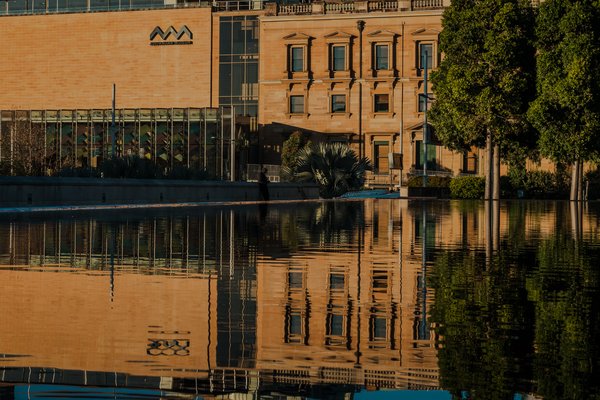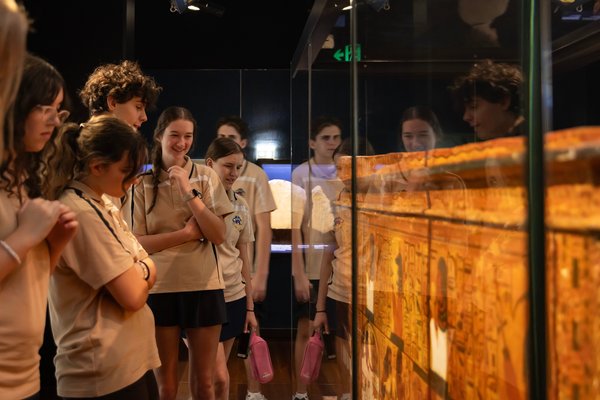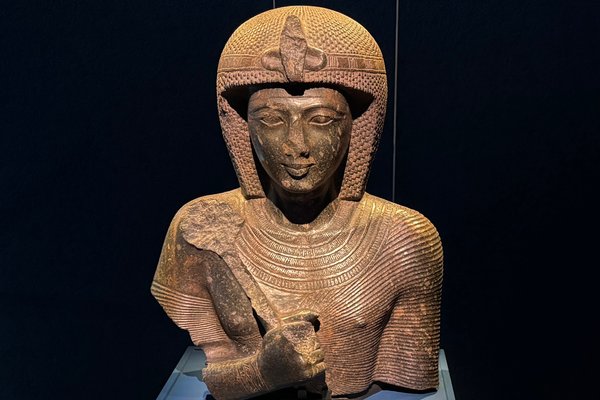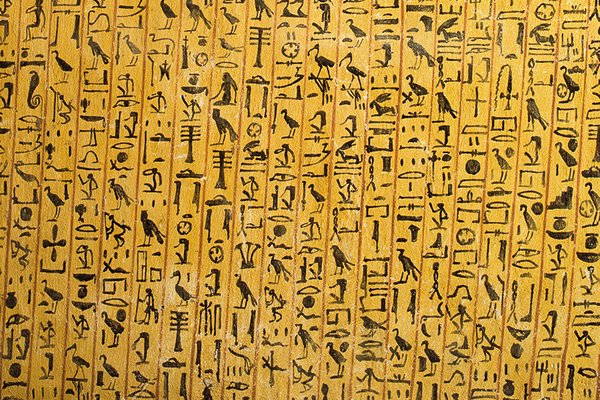Ramses: New Kingdom Egypt society during the Ramesside period unit
-
Audience
Secondary school, Teachers -
Learning stage
Stage 6 -
Learning area
History -
Type
Learning unit, Learning resources
On this page...
This unit provides a scaffolded approach to examining the New Kingdom Egypt society during the Ramesside period topic in the Ancient History Stage 6 Syllabus. Each activity will direct you to a section of the activity booklet (which is available in the unit below) and will guide you through a range of syllabus dot points and exhibition objects. You can download the whole booklet to use in class or access each activity individually from the Ramses learning resources page.
Make sure you read the learning intentions and success criteria attached to each activity and use them to reflect on your work.
Ramses II, commonly known as Ramses the Great left an enduring mark on history as one of Egypt’s most iconic and prolific pharaohs. His 67-year reign was marked by military conquest, diplomatic achievements, the world’s first known peace treaty and a building program that was among the most impressive in Egyptian history.
Featuring the greatest collection of Ramses II objects and Egyptian jewellery ever to travel to Sydney, Ramses & the Gold of the Pharaohs will transport students to Egypt’s most iconic sites to explore over 180 objects dating from the Old Kingdom to the Ptolemaic period.
By coming face-to-face with pharaohs, encountering rich multimedia experiences and hearing from some of the world's leading experts on Ramses II’s extraordinary life, students will examine the nature of power and authority, and the significant developments that shaped New Kingdom Egypt.
Through this unit, students will:
- assess the significance that individuals, features and events can have on society.
- analyse and interpret a range of sources for evidence to support an historical account or argument.
- propose arguments about how historical events and developments impact society.
- construct a range of written responses to show their understanding.
- effectively research a range of historical features, individuals and events.
Students will be successful when they can:
- describe the social structure and political organisation of New Kingdom Egypt society during the Ramesside period.
- evaluate how the different parts of economy contributed to society.
- assess the importance of religious practices and customs to society.
- analyse what objects reveal about cultural and everyday life.
- integrate a range of sources in appropriately structured responses.
NSW syllabus outcomes
AH12-1, AH12-2, AH12-3, AH12-4. AH12-5, AH12-6, AH12-7, AH12-8, AH12-9
-
Before your visit
-
Acknowledgement of Country
![Gadigal Shield and Statement of Reflection]()
Learn about the importance of an Acknowledgement of Country, and write one for your school.
-
Why you should use this resource
![Ramses the Great and the Gold of the Pharaohs exhibition]()
Designed for Option B: New Kingdom Egypt society during the Ramesside period in the Ancient History Stage 6 Syllabus.
-
Brainstorm
![The facade of the Great Temple of Ramses II, Abu Simbel, Aswan.]()
Using Abu Simbel as a case study, discuss how we can measure the success of a society through the construction of its monuments.
-
Activity one: Geographical context
![Archaeology of Ancient Egypt site.]()
Use sources to analyse the importance of the Nile to Egyptian society.
-
Activity two: Roles and images of the pharaoh and the concept of maat
![Ramses the Great and the Gold of the Pharaohs exhibition.]()
During New Kingdom Egypt, the pharaoh was both a representative of the gods and the head of state, wielding absolute authority. How did they construct their image to reinforce this power?
-
Activity three: Role of the vizier, members of government and the army
![Ramses Kooringal High School A Day at the Museum visit]()
In this activity, students will research the roles in New Kingdom Society by finding a translation of the 'Instruction of Rekhmire' and then complete source work on the elites and military.
-
Activity four: Role and status of women
![Ramses the Great and the Gold of the Pharaohs exhibition]()
What can sources tell us about the roles and status of women in New Kingdom society?
-
Activity five: Scribes and artisans
![Ancient cuneiform tablet of Egyptian–Hittite peace treaty (Treaty of Kadesh) in Istanbul Archaeology Museum. 1300–1200 B.C (detail).]()
Scribes played an important role in the Ramesside period, employed across the government including temples, the palace complex and in the military. They also liked to doodle!
-
Activity six: The importance of the Nile and agricultural workers
![Ramses programs - Painting from the Tomb of Sennedjem, Deir el Medina, 19th Dynasty]()
You have already considered the importance of the Nile to New Kingdom Egypt Society. In this activity you will consider the role it played in supporting the economy of Egypt during the Ramesside period.
-
Activity seven: Occupations and technological development
![Ramses the Great and the Gold of the Pharaohs exhibition]()
Use the sources in your booklet to analyse the importance of crafts, industries and technology employed by workers during New Kingdom Egypt.
-
Activity eight: Religion, death and burial
![Ramses programs - Painting from the Tomb of Sennedjem, Deir el Medina, 19th Dynasty]()
Religion during the Ramesside Period was a fundamental aspect of Egyptian culture, governance, and daily life.
-
Activity nine: Temples
![Ramses programs banner: detail of hieroglyphs in Karnak, Luxor Egypt]()
Using a layout of Sennedjem's tomb and your own research, compare and contrast the Karnak temple complex and the Ramesseum.
-
Activity ten: Cultural and everyday life
![Statue of Queen Tuya in Ramses the Great and the Gold of the Pharaohs exhibition.]()
Learn how art and culture served important political functions in New Kingdom Egypt.
-
-
At the Museum
-
Book a free self-led visit
![Exterior of Australian Museum building]()
Book in a self-led visit to the Museum for your school, and use our downloadable learning resources designed to engage students in our collections and exhibitions.
-
Access our exhibition sheets
![Ramses 7 the Gold of the Pharaohs Exhibition shots by James Alcock]()
Exhibition over? Don't worry, you can access our Ramses exhibition sheets to dive into all the exhibition's specimens, objects and stories.
-
-
After your visit
-
Object story
![Necklace with falcon heads and counterweights of Princess Neferuptah]()
If an object could speak, what kind of story might it tell?
-
Guiding questions
![School students look at a museum display]()
Reflect on the exhibition sheets and any objects you noticed from your visit to Ramses & the Gold of the Pharaohs.
-
Objects and the syllabus
![Ramses holding the Heka scepter in Ramses & the Gold of the Pharaohs exhibition.]()
In groups, build on your guiding questions and create a presentation that justifies why certain objects are relevant to the syllabus.
-
HSC essay practice
![Ramses programs, Egypt in Conversation - Painting from the Tomb of Sennedjem, Deir el Medina, 19th Dynasty (detail)]()
The final step in this journey is to bring together your knowledge from the booklet, your visit to Ramses & the Gold of the Pharaohs and work you have completed in class to practice your essay writing.
-

